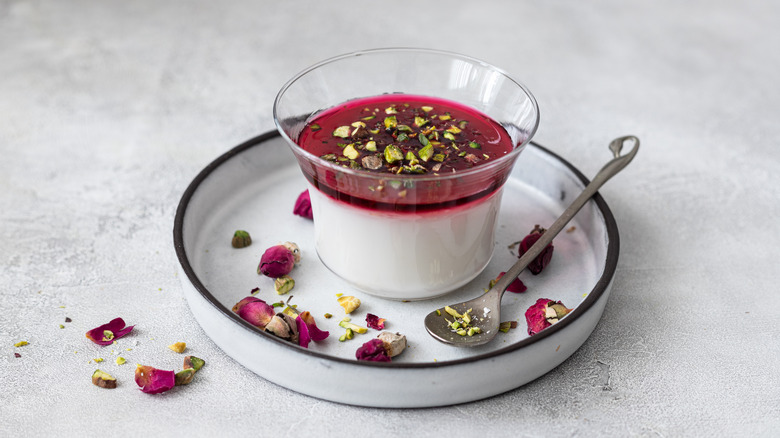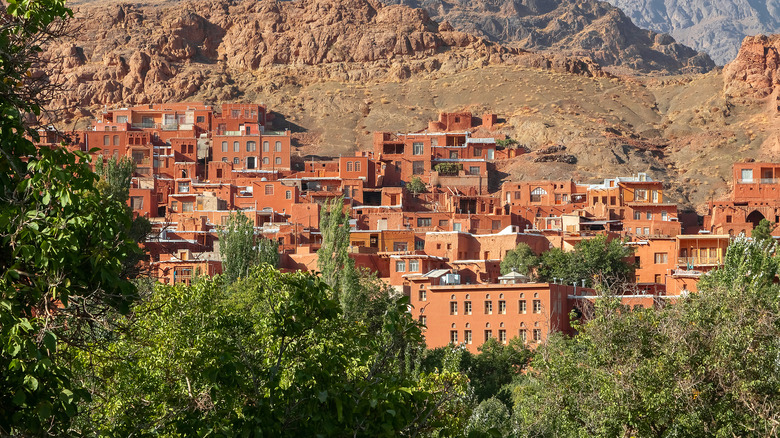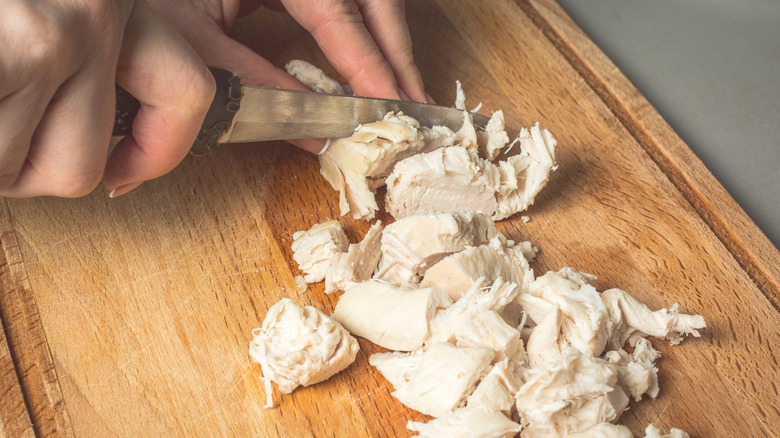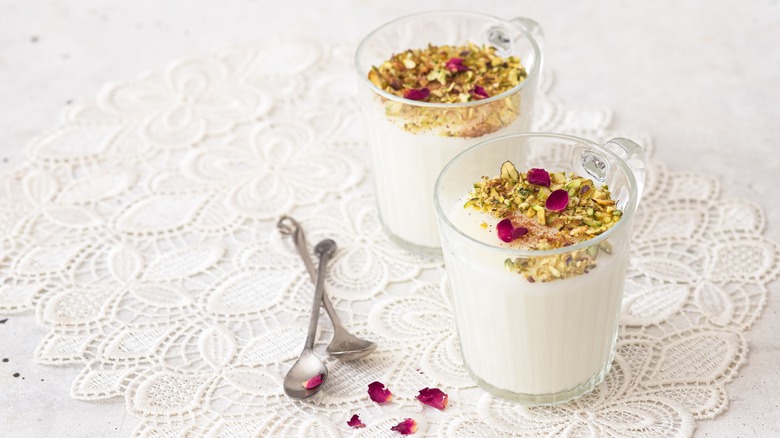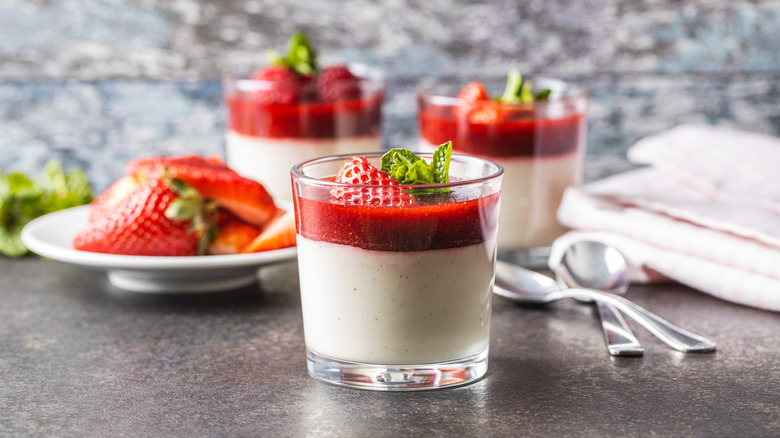The 7th Century Pudding That Spawned Several Classic Desserts
In case you missed that day in history class, the 7th century was one defined as a "turning point" in history according to Brewminate. The 7th century occurred well into the Middle Ages, a period we are familiar with for its beginnings rooted in the dramatic decline of the Western Roman Empire and the end showcasing a transition period into the Renaissance, per Britannica. People seem to be obsessed with the Middle Ages, or Medieval Period, for many reasons. Maybe it's an escape to simpler times, or the Dark Ages hosts unfound questions on humanity.
Whatever the reason, it is no surprise that society has been able to commercialize the obsession. Medieval Times, a dinner theater venue, and the pop-up of many medieval festivals bring light to what entertainment and dining may have looked like at the time. However, while giant turkey legs and garlic bread are enjoyable, the historical reality of the medieval diet is much more humble.
According to the British Library, a typical menu for the majority of people during this time included preserved foods such as bacon, pickled herring, or preserved fruits. Dairy products were also common, such as buttermilk, cheese, or curds.
But that doesn't mean the Middle Ages didn't see tasty desserts. Mahalabiya is a Middle Eastern pudding originating from this era, and it is credited with being the influence of many modern-day desserts.
History of mahalabiya
Mahalabiya specifically dates back to 7th century Persia, according to 196 Flavors. During this time period, the Persian dynasty was currently breaking apart into smaller Islamic empires. It was then, legend says, that a Persian cook created the first rendition of this dessert for an army general named Al-Muhallab ibn Abi Sufra. His instant love for the dessert was so strong, that the dish has since carried his namesake.
That instance popularized the dish and prompted the spread of mahalabiya across the region. Soon, it was introduced to Arabs in the 10th century in the city of Baghdad, according to Epicurious, where it is still popular today. The dish is most typically found in Iraq, Israel, Lebanon, Syria, and Egypt, per 196 Flavors.
While today we know the dish as a sweet milk pudding, the original recipes were savory. The dish continued to appear as its savory version well into the 16th century. A 13th-century cookbook bears proof of it still including diced meat. It was not until 1530 that we got to see mahalabiya transform into a dessert, according to Epicurious.
Ingredients in mahalabiya
You may be familiar with meat meeting sweet, in the instance of bacon on maple cream donuts or fried chicken on waffles. However, diced chicken breast mixed with sugary flavors may not seem as appealing. But if you were living in the Middle Ages, that's exactly what you would find in your mahalabiya.
According to Epicurious, some of the first recipes for mahalabiya included an ingredient list of chicken breast, rice, milk, and almonds for a base, which was paired with sugar or honey for a sweetener. The original recipe can be found in a 13th century Andalusian cookbook. Epicurious cites The Iraqi writer Nawal Nasrallah who describes the first recipes as "a dish of diced meat layered with diced sheep's tail fat and crumbled thin bread. The layered ingredients are drenched in a custard-like mix of eggs, sugar, and milk then baked."
In 1530, when mahalabiya made its savory-to-sweet transformation, it kept true to its original ingredient list for the most part. The dish still combined milk, rice, and almonds, but diced meat was absent. However, rose water was also added alongside powdered sugar for a subtle sweetness, per Epicurious.
Today, rose water is still a common sweetener, as is orange blossom water. 196 Flavors notes the dessert can also be topped with chopped pistachios, almonds, or walnuts. The site's modern recipe includes whole milk, cornstarch, caster sugar, orange blossom water, crushed gum arabic, crushed pistachios, and mineral water.
How mahalabiya is made and eaten
According to 196 Flavors, the original recipe was a bit time-consuming to make. The rice was first rinsed and then drained in a cloth, typically overnight. The rice was ground into a fine powder, resulting in rice flour. At that point, milk was added, along with other ingredients.
Today, the process is less time-consuming. According to Hungry Paprikas, whole milk, corn starch, and sugar are whisked together. When the dry ingredients are fully dissolved, the cream is often added over medium heat, although this is optional. After mixing over heat, the texture will be more pudding-like.
At this point, the seasonings can be added, such as rose water or orange blossom water. The mixture is then poured into small dishes and put in the fridge to cool. The final result, after a few hours, is a delicious pudding that can be topped with pistachios, or any nut of choice. Epicurious also notes it can also be paired with preserved apricots or other seasonal fruits.
The dish is eaten chilled, and often served for family gatherings, such as during religious holidays and events. This can include celebrations during both Ramadan and Eid, according to 196 Flavors.
Desserts mahalabiya inspired
It is no short list of desserts that are said to be inspired by the original Mahalabiya dessert. While it has some direct variations in the Middle East, with similar names, it also is credited with influencing dishes often found across the globe.
According to 196 Flavors, the dessert is most common in Lebanon, Syria, Iraq, Israel, and Egypt, although some versions have a few discrepancies. For example, in Israel, the name of the pudding is malabi. The main differences are that it utilizes both milk and cream for a smoother consistency, and it may be garnished with coconut instead of other nuts.
Other regional names the dish can go by are muhallebi in Turkey, mahalabia or muhallabiyyat in Arabic, and mahalepi in Greece, per 196 Flavors.
Epicurious also notes that some similar European puddings are made through the same technique as mahalabiya. It is difficult to know for sure what all the dishes' specific origins and influences are. However, the site cites experts who attest that Spain's manjar blanco and Italy's panna cotta could have originated with mahalabiya. Even the Philippines' maja blanca may very well be a spin-off dish.
Epicurious cites Alan Davidson, a late British author, who believes that this scenario is likely since rice and almonds were both imports that originated from the Middle East.
